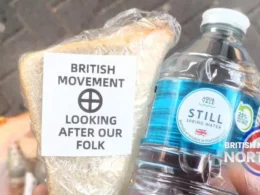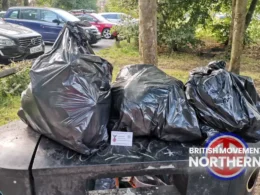This post has been held back due to time and space constraints.
Last Saturday, May 31st, Castleford in West Yorkshire held its annual Roman Festival. The festival celebrates the Roman past of Lagentium, which was the Roman name for the fort and the surrounding civilian settlement, or Vicus.
The Castleford Roman Festival is described as ‘an opportunity for all to discover what history lies beneath the streets whilst enjoying non-stop family-friendly activities including a Roman-themed market, thrilling street show, archaeological dig, guided tours and much more,’ and has been on my to-do list for quite a while.

A guided tour of Roman Castleford was conducted by an actor in full Roman soldier costume. Perhaps I am doing him an injustice by calling him just an actor – his knowledge of the site and history of the period was extensive. Combined with his off-the-cuff wit and delivery, he made the tour much more enjoyable and informative.

Roman Castleford
The Roman Flavian Auxiliary Fort was situated on the south bank of the River Aire, just downstream of its confluence with the River Calder, at the point where the stream was forded by the main Roman road running between the Colonies at Lindum (Lincoln) and Eburacum (York).
The fort was manned by around 600 soldiers and was garrisoned for 24 years by the army. The land around this part of Yorkshire was controlled by the Brigantes, a local Celtic tribe whom the Romans simply believed were barbarians. The site for the fort was chosen by Roman engineers due to its strategic position and the shallow river crossing nearby.
The Queen of the Brigantes, Cartimandua, at first had a policy of becoming an ally of the Romans, rather than opposing them. In the end her own people, led by her ex-husband, revolted against her. This became the excuse for the Romans to move in and take control. Petillius Cerialis, Roman governor of Britain, conquered almost the whole of the north of England from AD 71 – 74.
The Tour
The first stop on the tour was literally 2 minutes after we set off, when our Roman soldier guide asked us to look left and imagine what we would have seen almost 2,000 years ago. Our view would have been the East walls of the fort, which in itself must have been an intimidating sight for the locals.
Moving on, we walked past Queens Mill (where Yvette Cooper now has her constituency office) and stopped at Ford Square. I must admit I had passed here many times before without realising its significance. Ford Square is where the river was shallow enough to cross on the way to Tadcaster and York. Our guide explained that when swollen by rain, the river would have run off into the nearby fields, making the surrounding land highly fertile. Today we have stopped the river from bursting its banks, and as a consequence it is now too deep to cross.


Across the road from Ford Square is a rectangle of land on which a team of archaeologists were using geo-phys (ok, I admit it, I’ve watched Time Team), to map out the site of the fort’s bathhouse. Roman bathhouses were built outside of the fort’s walls and usually near a source of water.

Walking up towards the town centre again, we stopped by the former Wilkinsons store car park, by a patch of nettles actually. Our guide used the nettles to explain that we could blame the Romans for them: they were introduced to Britain along with peas, rabbits, etc., by the invading Romans.
Our last stop was outside Chantry Vets, just before the Junction pub, where there is a blue plaque stating that the western defensive rampart of a Roman auxiliary fort of the First-Century lies beneath the building. Across the road stands the All Saints’ Church, where another dig was taking place. This was to discover if the main Roman Road ran beneath it. And here our tour ended.

The civilian settlement, or Vicus, grew up on the north side of the fort, approximately where the railway station and council offices are now. Roman Castleford was a key manufacturing location that specialised in metalwork, particularly in the production of small items – especially those featuring enamel decoration. Skilled artisans fashioned spoons, brooches, and water canteens. These items were commonly used as military equipment or as souvenirs.

Over the years, many thousands of objects from the Roman period have been discovered, many of them now on display in the town’s museum. Some of the finds are unique, with some uncovered artefacts related to crafts that have not been found in any other location in Britain.
The Roman Festival is an annual event, and I would strongly urge anyone with a love of our history to make the effort to attend. You will not be disappointed.
Credits:
All Images: British Movement.
The British Movement welcomes articles for possible inclusion on this site from members and supporters across the North of England. Please remember that we have to operate within the laws of this country; we will not include any content that is against the current laws of the United Kingdom. News reports should be topical and relevant to the regions covered by this website.












